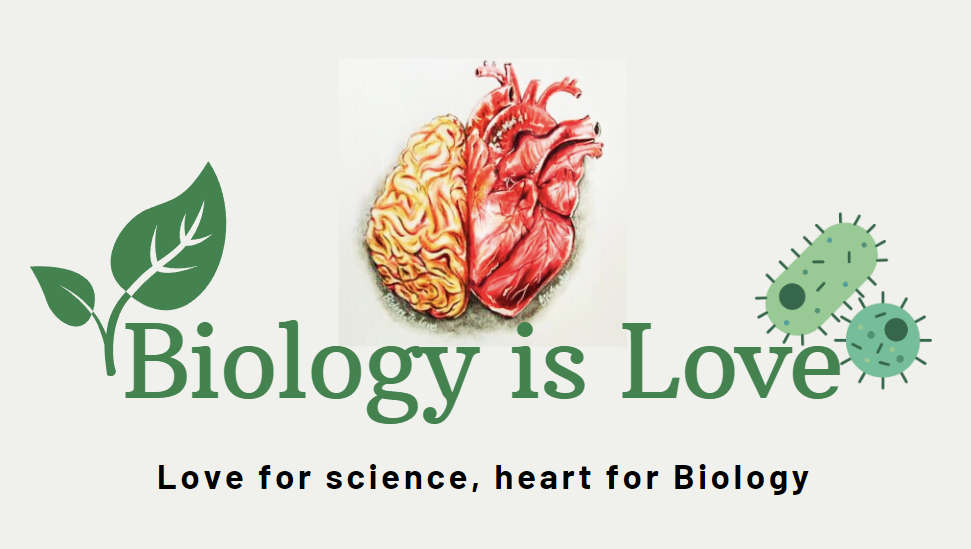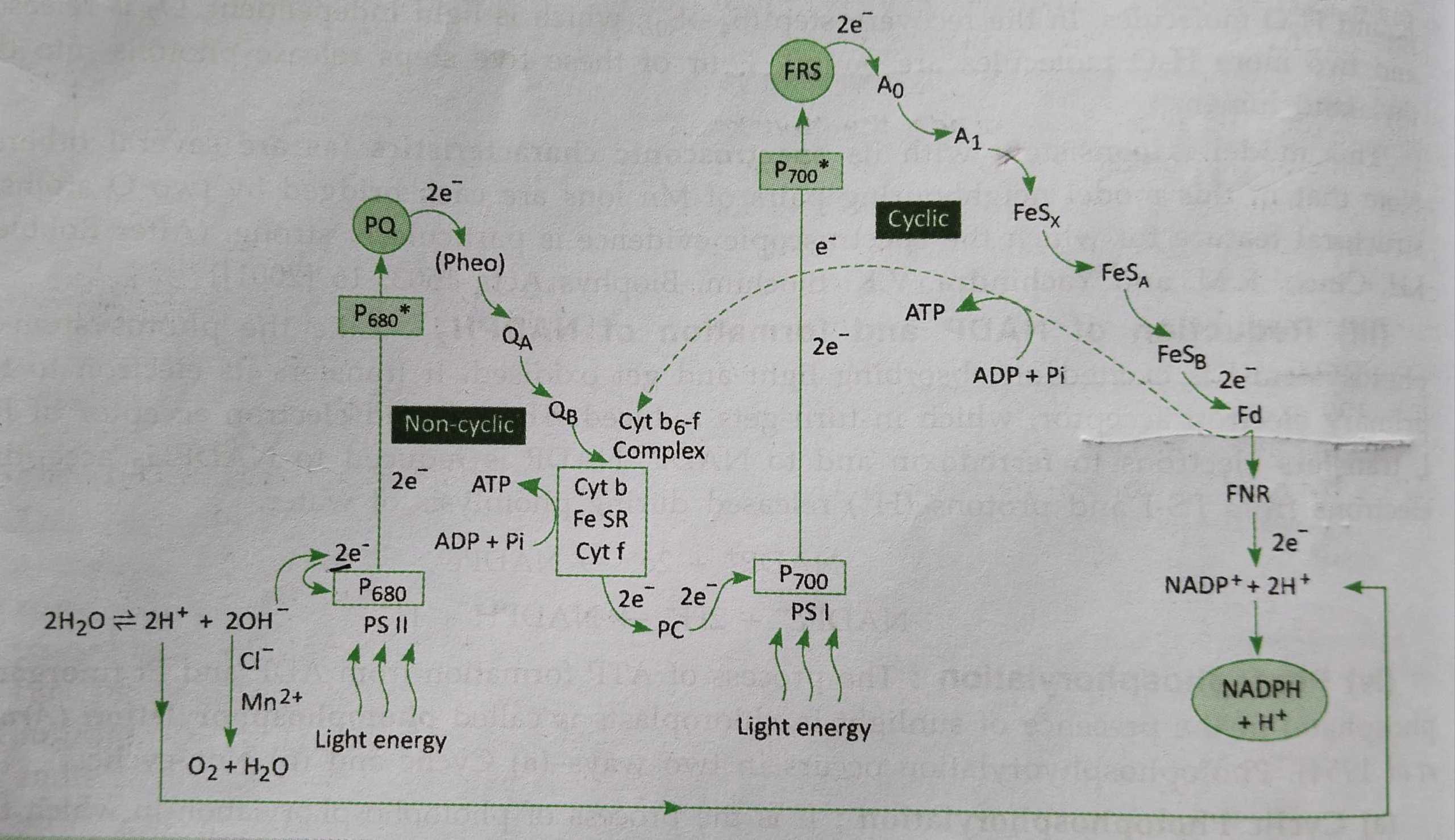Table of Contents
Light reaction or Photochemical reaction series can be studied in the following sub-stages: 1) Absorption of light energy by photosystems 2) Photolysis of water and evolution of water 3) Reduction of NADP and formation of NADPH2 4) Photophosphorylation.
1) Absorption of light energy by photosystems
The two photosystems absorb different wavelengths of light. The light energy absorbed anywhere in the harvesting zone of a photosystem is passed to its photocenter. When the photocenter acquires a sufficient quantum of energy, it emits an electron. The electron with high potential energy moves down to an electron transport chain, and results in the formation of ATP. So, the primary function of the two photosystems is to trap light energy and convert it to chemical energy (ATP).
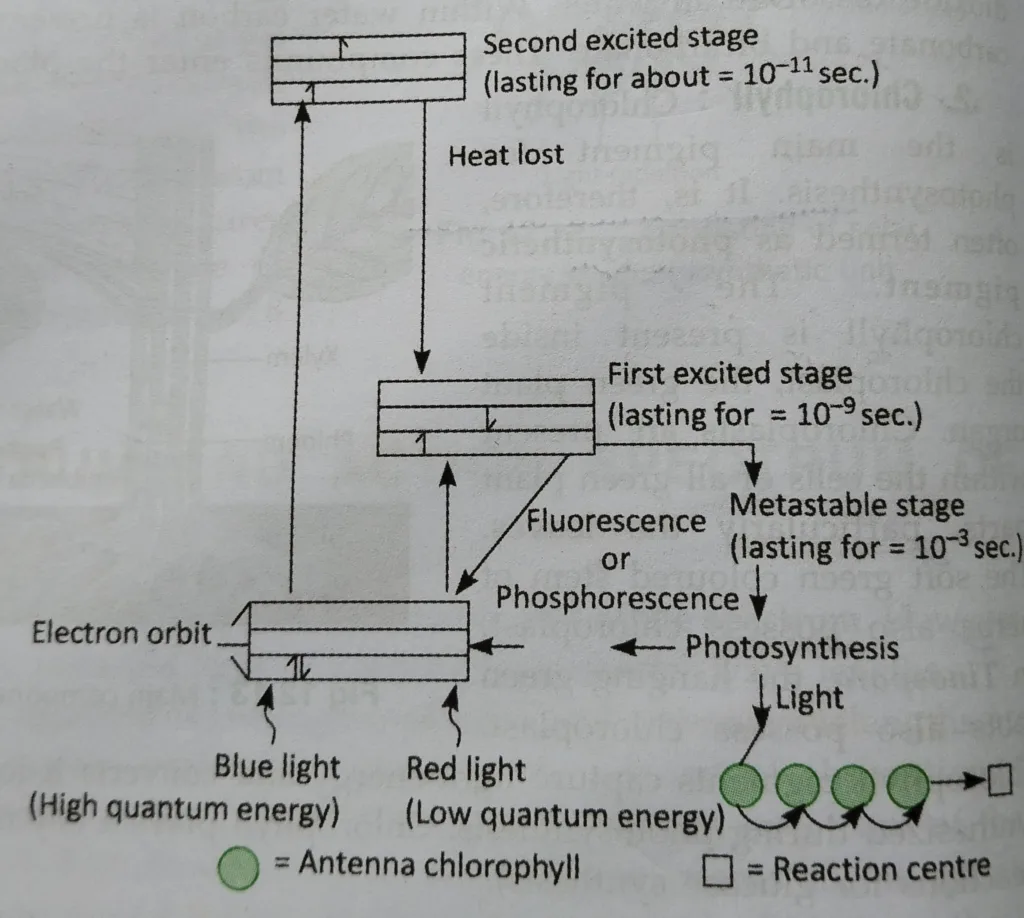
2) Important part of Light reaction- Photolysis of water and evolution of water
- With the absorption of light, photosystem II (P 680), electrons are released and the chlorophyll molecule is oxidized.
- The electrons emitted by the PS II are trapped by PS I (P 700).
- The oxidized P 680 becomes a strong oxidizing agent and regains its electron by the photolysis of water. The light-dependent splitting of water needs Mn2+ and Cl– ions.
- The electrons, generated by the breakdown of water are passed to the oxidized P 680.

Photolysis of water was first demonstrated by scientist Robin Hill and referred to as Hill reaction.
3) Reduction of NADP and formation of NADPH2
Like the PS II, PS I is excited on absorbing light and get oxidized. It transfers its electron to the primary electron acceptor, which in turn gets reduced. The reduced electron acceptor of PS I, transfer electrons to ferredoxin and to NADP. NADP is reduced to NADPH2 accepting electrons from PS I and protons (H+) released during photolysis of water.

4) Photophosphorylation
The process of ATP formation from ADP and Pi (inorganic phosphate) in the presence of sunlight in the chloroplast is called photophosphorylation. It occurs in two ways:
Cyclic photophosphorylation:
In this process, the electron expelled by the excited photocenter is returned to it after passing through a series of electron carriers. It involves PS I only. Electron carriers involved are ferredoxin (Fd), plastoquinone (PQ), cytochrome complex (Cyt b6, Cyt f) and plastocyanin (PC). This downhill movement of electron from the electron acceptor to P 700 results in the formation of ATP from ADP and Pi is called Cyclic photophosphorylation.
During this process, photolysis of water does not occur, hence Oxygen is not released and NADPH2 is also not formed.
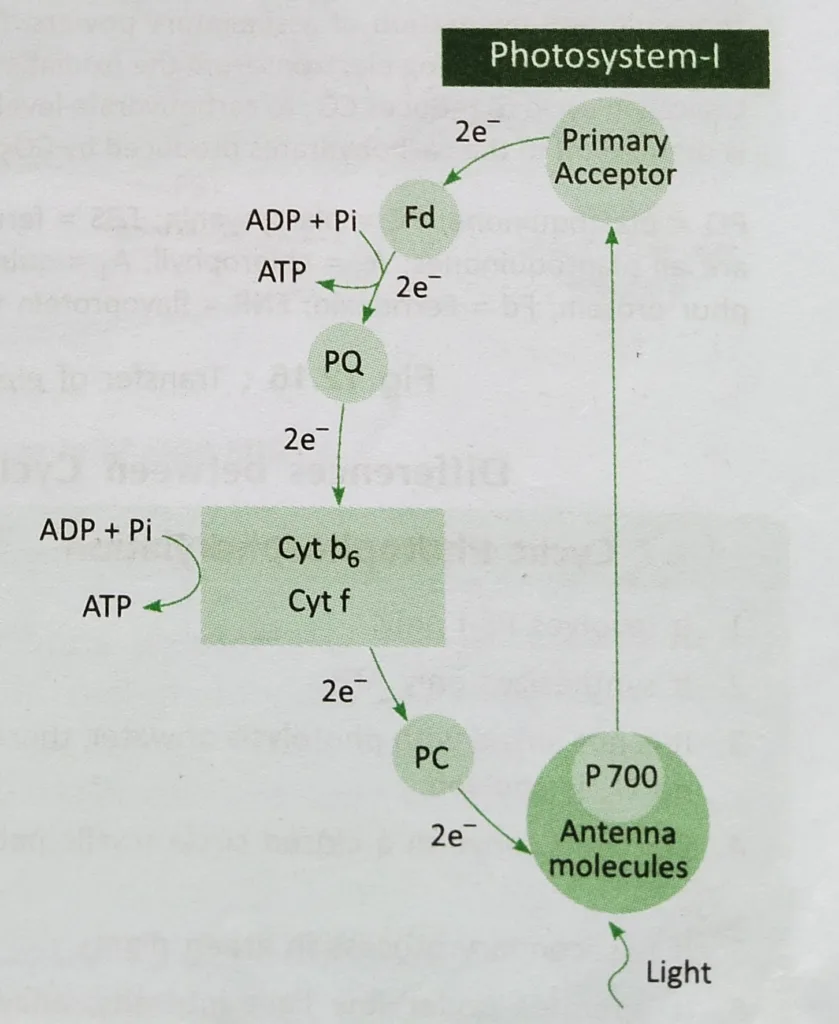
Non-cyclic photophosphorylation:
In this case, both PS I and PS II are involved. There is a continuous current of electrons flowing from P 680 to NADP+. Electrons from P 680 are replaced by electrons removed from water by splitting the water that evolves oxygen. The excited electrons from P 680 flow down an electron transport chain to P 700 (plastoquinone (PQ), cytochrome complex (Cyt b6, Cyt f), plastocyanin (PC)) generating ATP.
The net products are ATP, NADPH2, and O2. Since, in this process, high-energy electrons released from PS II do not return to PS II, and ATP is generated. This is called Non-cyclic photophosphorylation. In Non-cyclic photophosphorylation, the electron transport takes the shape of the alphabet ‘Z’. hence, it is known by the name Z scheme.
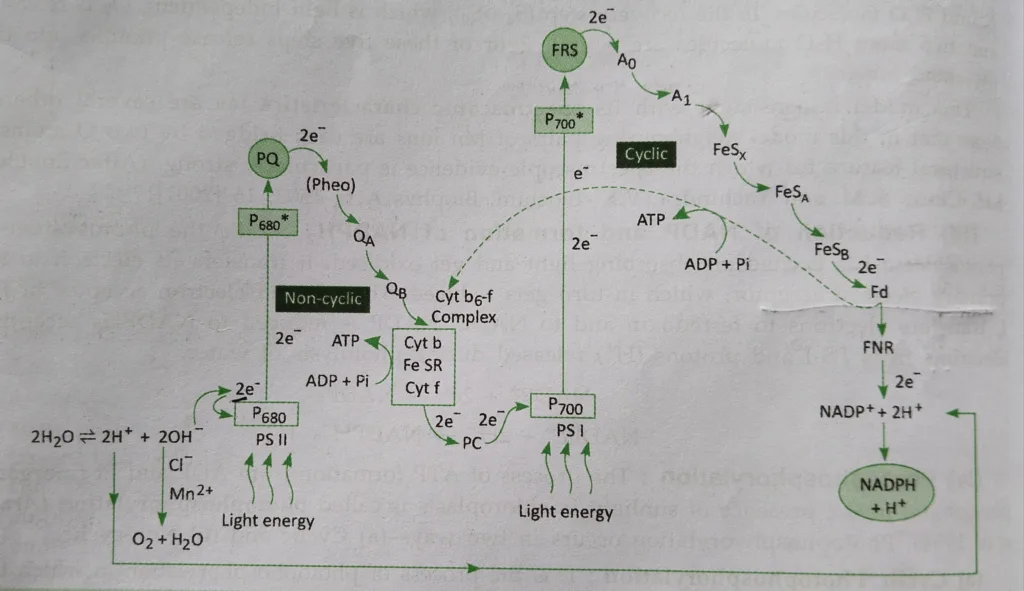
Other content related to this:
- Introduction to photosynthesis: https://thebiologyislove.com/photosynthesis-equation-and-reactants/
- Dark reaction: https://thebiologyislove.com/calvin-benson-cycle-or-dark-reaction/
Facebook link: https://www.facebook.com/share/p/5jbW9gtw3PDJGiSL/?mibextid=oFDknk
